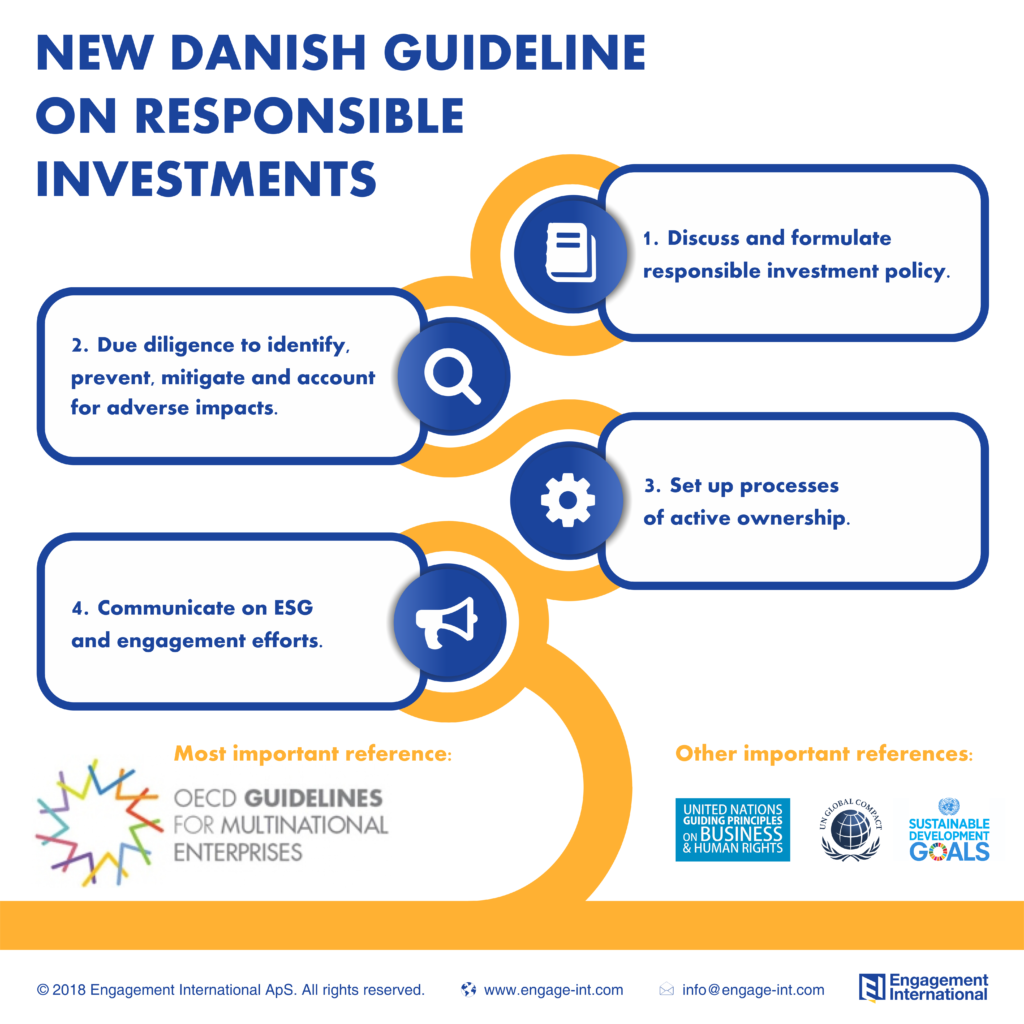New Danish guideline on Responsible Investments
Early March, the governmental entity Danish Business Authority, launched its long-awaited publication Recommendations on Responsible Investments. It closely refers to the OECD’s Responsible Business Conduct for Institutional Investors which is an integrated part of the OECD Guidelines on Multinational Enterprises. The Danish guidelines also refer to the United Nations Guiding Principles on Business and Human Rights (UNGP), the Paris Accord on Climate Change and UN’s 17 Sustainable Development Goals (SDGs).
These new Danish guidelines cover all asset classes. They are not mandatory, but the government expects all institutional investor to follow suit. By launching the Danish guidelines, the Ministry of Industry, Business and Financial Affairs and the government want to help clarifying the expectations as to how Danish institutional investors should act in the context of responsible investment. The Danish guidelines suggest four steps.
First of all, each institutional investor must discuss and formulate its own responsible investment policy. Most institutional investors have already carried out this task and announced their individual policies. It may be a separate document or a part of the investor’s investment strategy statement – resolved by the board of directors.
Secondly, the institutional investor must identify, prevent, mitigate and account for adverse impacts on matters covered by the OECD Guidelines (e.g. human rights, labour, environment, bribery and other integrity impacts, etc.). This includes three important due diligence elements: risk analysis, screening and prioritising. The latter stressing that do not expect to manage everything at first but prioritise your efforts according to materiality.
Thirdly, like the OECD and UN guidelines, the Danish authorities expect institutional investors to set up processes to become active investors engaging on their own or through collaborative engagement with the companies in focus to manage adverse impacts, where the companies cause, contribute or are directly connected to adverse impacts. According to the guidelines, it is stressed that only in very severe instances or if engagement is not expected to have effect or have not made progression for a longer period of time divestment or exclusion are explicitly considered the options of last resort.
Finally, institutional investors are expected to communicate on their ESG and engagement efforts, challenges, priorities and results. This could be in their annual reports or on their websites.
The guidelines only offer a framework for active ownership. It is fully up to each institutional investor how to live up to the guidelines. This process has already been in effect for some years for most Danish institutional investors. Coming reporting will reveal how the expectations are met.


